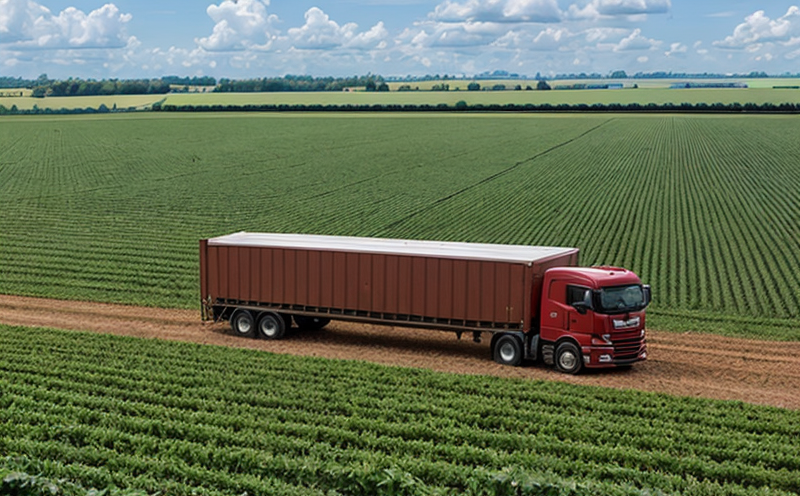Temperature Cycling Simulation during Transport
In the agricultural and forestry sectors, packaging plays a crucial role in ensuring that goods are transported safely and effectively. The integrity of packaging is often tested through temperature cycling simulation during transport to ensure it can withstand environmental stresses throughout transit.
The objective of this service is to simulate real-world conditions that packaged agricultural products may encounter during transportation. This includes exposure to a range of temperatures, humidity levels, and other environmental factors such as vibration and shock. By replicating these conditions in the laboratory, we can assess how packaging performs under stress, thereby identifying potential weaknesses or areas for improvement.
Our service utilizes advanced equipment capable of precisely controlling temperature variations within controlled environments. This allows us to simulate various climatic zones that agricultural goods might traverse during their journey from farm to market. The process involves subjecting the packaging samples to a series of temperature extremes, often following international standards such as ISO 11698 or ASTM D7042.
Before initiating the test, our expert team prepares the packaging samples by ensuring they are representative of actual field conditions. This includes placing the goods inside containers that closely mimic real-world packing configurations. Once prepared, these containers are placed into a temperature cycling chamber where they undergo cycles of heating and cooling to replicate various transport scenarios.
The duration and frequency of each cycle depend on the specific requirements set by our clients or industry standards like ISO 14985 for medical device packaging. After completing all required cycles, we evaluate the packaging’s performance using visual inspection methods as well as more rigorous mechanical tests to check integrity such as tensile strength measurements.
Our reports provide detailed insights into how different types of packaging performed during these simulated transport conditions. They also offer recommendations for enhancing package design based on observed weaknesses or failures identified during testing. This information is invaluable not only for quality managers looking to maintain consistent product quality but also for R&D engineers seeking innovative solutions that enhance both protection and sustainability aspects.
- Reduces the risk of product damage due to improper packaging
- Promotes sustainable practices by optimizing resource usage through improved design
- Aids in compliance with regulatory requirements regarding food safety and environmental impact
Applied Standards
The temperature cycling simulation during transport is governed by several international standards which provide guidelines for testing procedures, acceptance criteria, and expected outcomes. Some key documents include:
- ISO 11698:2015 – Packaging of pharmaceutical products: Transportation conditions – Temperature cycling test
- ASTM D7042-18a – Standard practice for conditioning, packaging, and transporting laboratory specimens of materials in simulated transport environments
- EN 356:2019 – Packaging – Determination of resistance to puncture by means of a sharp object using a pressure tester
To ensure accurate and consistent results, it is essential that these standards are followed meticulously. Compliance with such regulations helps manufacturers demonstrate adherence to industry best practices while protecting their brand reputation.
Environmental and Sustainability Contributions
By simulating temperature cycling during transport for agricultural goods, our service contributes significantly towards environmental sustainability efforts. Here’s how:
- Reduction in waste generation: Enhanced packaging designs result in less material being used, thus reducing landfill contributions.
- Emission reductions: Properly designed packages can minimize energy consumption during production and transport by ensuring efficient insulation properties against temperature fluctuations.
- Better resource utilization: Optimizing package design reduces the need for over-packaging, leading to more efficient use of raw materials.
Use Cases and Application Examples
The temperature cycling simulation during transport is particularly beneficial in various scenarios:
Fruit & Vegetable Transport: Simulating cold chain management ensures that perishable goods remain fresh throughout their journey.
Cereal Grains Packaging: Evaluates how well the packaging protects grains from moisture absorption during transport.
Poultry Products Transportation: Tests insulation capabilities to prevent cross-contamination and maintain hygiene standards.





